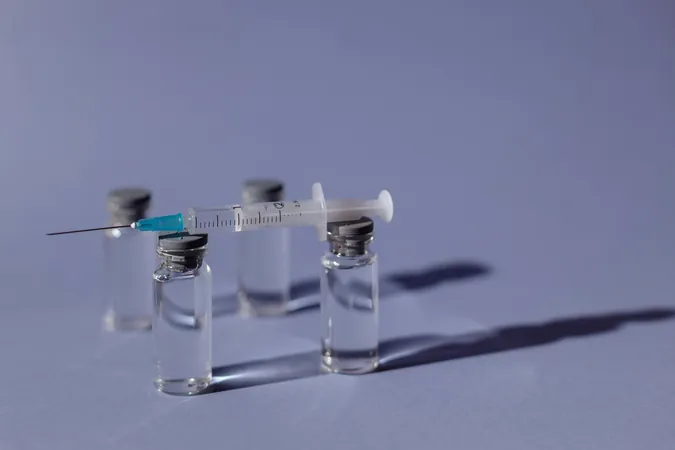
Revolutionizing Vaccination: The Promise of Universal Vaccines Against Future Outbreaks
2025-05-22
Author: Sophie
Every year, a high-stakes race unfolds as scientists and pharmaceutical companies rush to combat ever-evolving viruses. With billions invested globally into tracking mutations, developing vaccines, and managing intricate distribution systems, public health officials brace for another wave of flu and COVID vaccinations.
However, this relentless cycle has a daunting cost, placing immense strain on already-burdened health systems, particularly in lower-income regions. This is why the dream of universal vaccines—immunizations that can shield us from all major virus types, both seasonal and pandemic—has gained significant traction among scientists.
Crafting a universal vaccine is no easy task. The challenge primarily arises from the rapid mutation of viruses like influenza and SARS-CoV-2, which can evade the immune system's defenses built from past infections and vaccinations. To succeed, researchers aim to pinpoint "conserved regions" of the virus that remain unchanged across various strains.
These regions are tricky for our immune system to detect, leading scientists to devise methods that amplify the body’s response to them. One promising technique involves excluding the rapidly changing parts from the vaccine to help the immune system hone in on the stable regions.
Another innovative concept is the use of "mosaic" vaccines, which blend components from multiple virus strains to elicit a broad defensive reaction.
Several cutting-edge technologies are now emerging to deliver these vaccines, each at different stages of development. For instance, mRNA vaccines—like those employed during COVID—use lab-engineered strands of messenger RNA to prompt cells to produce viral proteins capable of triggering an immune response.
Additionally, viral vectors utilize harmless viruses to deliver genetic materials into human cells, enhancing immunity. Both strategies proved transformative during the pandemic.
Moreover, innovations utilizing nanoparticles, which consist of synthetic biological particles to enhance delivery and immune reaction, along with "virus-like particles" that mimic virus structures without genetic material, are being explored.
Researchers are leveraging powerful computational tools to design vaccines potentially effective against multiple strains, not just for flu and COVID but also against other rapidly evolving viruses like HIV.
The urgency for such breakthroughs has recently received a significant boost with the U.S. government unveiling a $500 million investment to fast-track universal vaccine research. Experts argue this funding is crucial after years of neglect exacerbated by the pandemic's focus on emergency production.
The expedited development of COVID vaccines illustrated how targeted funding and global cooperation could lead to remarkable scientific advancements. A similar strategy could be the beacon of hope needed to make universal vaccines a reality by supporting preliminary research, funding clinical trials, and enhancing manufacturing and logistics.
Yet, not all experts are optimistic—some raise concerns that this investment may favor a narrow pool of researchers and outdated techniques. Critically, they advocate for a diverse range of vaccine strategies rather than a single, rigid approach.
In the end, the vision for universal vaccines transcends scientific ambition; it aims to alleviate pressures on global health systems, reduce costs, and fundamentally transform how the world responds to emerging outbreaks.









 Brasil (PT)
Brasil (PT)
 Canada (EN)
Canada (EN)
 Chile (ES)
Chile (ES)
 Česko (CS)
Česko (CS)
 대한민국 (KO)
대한민국 (KO)
 España (ES)
España (ES)
 France (FR)
France (FR)
 Hong Kong (EN)
Hong Kong (EN)
 Italia (IT)
Italia (IT)
 日本 (JA)
日本 (JA)
 Magyarország (HU)
Magyarország (HU)
 Norge (NO)
Norge (NO)
 Polska (PL)
Polska (PL)
 Schweiz (DE)
Schweiz (DE)
 Singapore (EN)
Singapore (EN)
 Sverige (SV)
Sverige (SV)
 Suomi (FI)
Suomi (FI)
 Türkiye (TR)
Türkiye (TR)
 الإمارات العربية المتحدة (AR)
الإمارات العربية المتحدة (AR)